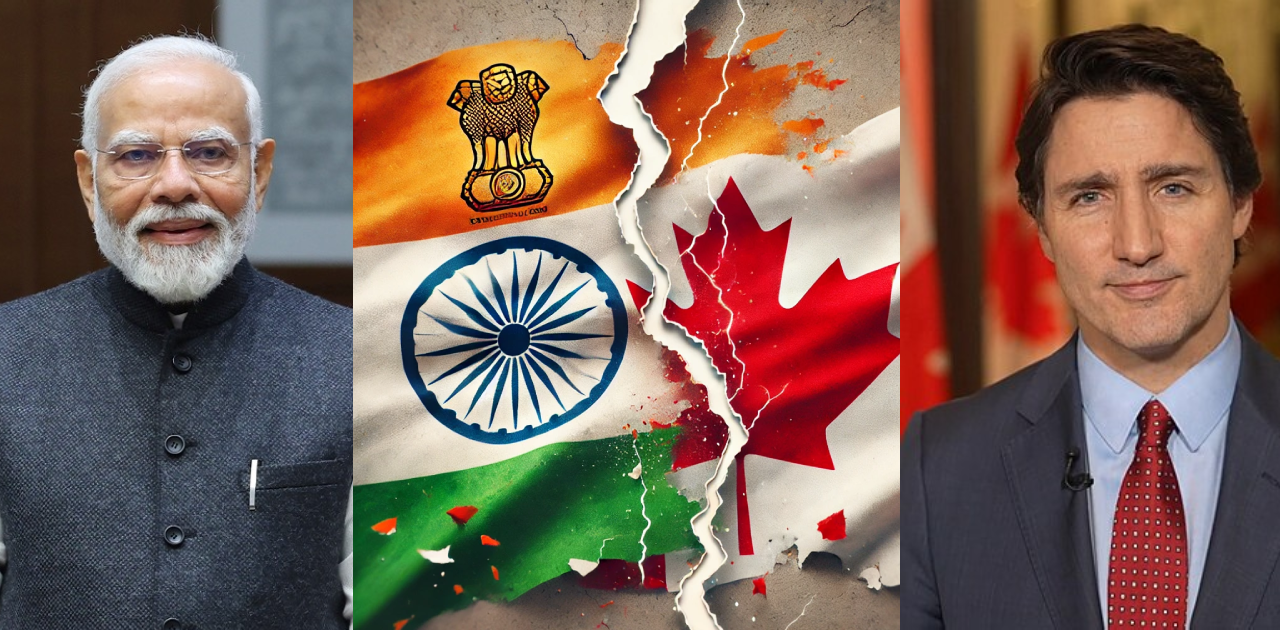Diplomatic relations between India and Canada have hit rock bottom, with both nations entangled in a heated standoff. The killing of Sikh separatist leader Hardeep Singh Nijjar in Canada, which Ottawa blames on New Delhi, has ignited a series of tit-for-tat actions. In a puzzling contrast, India has shown a far more cooperative approach with the U.S. over a similar plot targeting another Sikh activist, Gurpatwant Singh Pannun. This diplomatic divide sheds light on the different strategies India employs with Canada and the U.S., reflecting how international relations can often serve domestic political interests.
How It All Escalated
The relationship between India and Canada took a serious hit after the shocking killing of Hardeep Singh Nijjar, a prominent Sikh leader, in British Columbia in June 2023. Canada accused India of orchestrating the assassination on its soil, setting off a chain reaction of diplomatic confrontations. Both countries expelled each other’s diplomats, and trade negotiations were put on hold. What was once a relationship marked by trade and diplomacy has now turned into a public spat, with neither side willing to back down.
At the heart of this dispute is a deeper political struggle. India accuses Canada of being a safe haven for Sikh separatists, like Nijjar, who advocated for an independent Sikh homeland called Khalistan. For years, India has expressed frustration over Canada’s leniency toward these activists, viewing them as threats to national security. Canada, however, defends its position as a promoter of free speech, despite India’s repeated protests. With the Nijjar incident, the underlying tensions have boiled over into open diplomatic warfare.
Why India Is Playing Hardball with Canada
India’s tough stance toward Canada serves more than just national pride, and it is also a politically savvy move for Prime Minister Narendra Modi. The accusations against India gave Modi an opportunity to reinforce his image as a leader who stands firm against foreign interference. His nationalist base, already sensitive to issues of sovereignty, sees the conflict as proof of Modi’s strength and patriotism. As he gears up for the next election, Modi is using this episode to divert attention from economic and political challenges at home and rally public support.
Canada’s Prime Minister Justin Trudeau also seems to benefit politically from the standoff, though perhaps only in the short term. His party is struggling in the polls, and Trudeau has been criticized for his handling of various domestic issues. By taking a bold stance against India and defending Canadian sovereignty, Trudeau can shift public focus away from his internal political problems. The Sikh diaspora in Canada, an influential group, has long supported Trudeau's party, and his strong reaction to India’s actions may help him shore up that support. However, many analysts believe this political boost could be temporary, as Trudeau still faces pressing domestic challenges.
A Softer Approach with the U.S.
While India has taken a tough stance with Canada, it has been surprisingly cooperative with the U.S. over a similar case involving Gurpatwant Singh Pannun, a U.S.-based Sikh separatist. Pannun, like Nijjar, advocates for Khalistan and is designated as a terrorist by India. In this case, U.S. authorities uncovered a plot to assassinate Pannun, allegedly involving an Indian national. Instead of escalating tensions, India has responded with restraint, emphasizing cooperation with American investigators and pledging to look into the allegations.
The reason for this contrasting approach is straightforward: the stakes with the U.S. are much higher. India values its relationship with the U.S., which is essential for trade, defense, and geopolitical interests, especially as both countries seek to counterbalance China’s growing influence. For Modi, maintaining good relations with the U.S. is critical, and any diplomatic fallout could jeopardize these strategic interests. As a result, India has treaded carefully, opting for inquiries and diplomatic engagement rather than confrontation.
A Strategic Balancing Act
India’s divergent responses to Canada and the U.S. reflect a carefully calculated strategy. With Canada, the costs of confrontation are relatively low, and the political benefits for Modi are clear. Being seen as standing up to Canada enhances his image as a strong leader who will not tolerate interference, which plays well with his domestic audience.
In contrast, the stakes with the U.S. are too high for India to risk a similar confrontation. A fallout with Washington could harm India’s economic growth and derail key defense partnerships. By cooperating with the U.S. in the Pannun case, Modi ensures that India stays on Washington’s good side while still managing the narrative at home.
Political Games at Play
Both Modi and Trudeau are using the diplomatic crisis for political advantage. Modi’s tough stance helps him project strength and nationalism, crucial assets in an election year. Trudeau, on the other hand, is leveraging the conflict to distract from his political woes and rally support among the Sikh community.
However, this strategy carries risks for both leaders. If the standoff drags on, it could disrupt trade and harm diplomatic ties in the long run. For Trudeau, the support he gains from the Sikh community may not be enough to offset the criticism he faces at home. Similarly, Modi’s nationalist narrative may lose steam if economic challenges intensify and voters become more concerned with bread-and-butter issues.
Conclusion
The ongoing India-Canada feud shows how global diplomacy can become intertwined with domestic politics. While the tensions may seem rooted in matters of sovereignty and security, they are also shaped by the political needs of both leaders. Modi’s tough talk with Canada helps him rally voters, while Trudeau’s defiance boosts his standing among key supporters. At the same time, India’s softer approach with the U.S. reveals the balancing act required to manage international relationships while serving domestic agendas.
As the standoff continues, the real challenge will be how long both leaders can maintain these narratives without facing backlash. For now, it’s a political win-win, but only time will tell if the gamble pays off.

